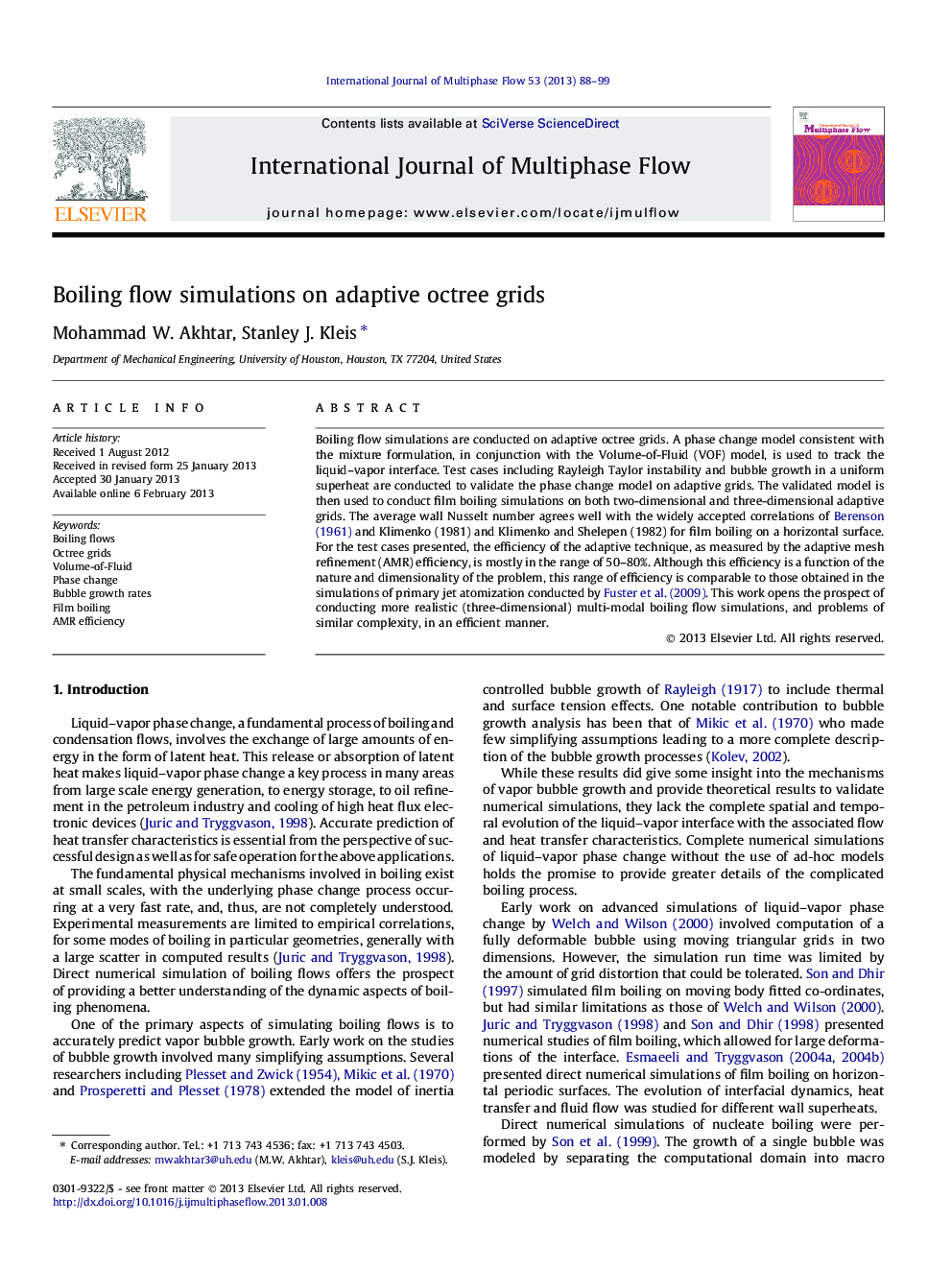| Article ID | Journal | Published Year | Pages | File Type |
|---|---|---|---|---|
| 667709 | International Journal of Multiphase Flow | 2013 | 12 Pages |
Boiling flow simulations are conducted on adaptive octree grids. A phase change model consistent with the mixture formulation, in conjunction with the Volume-of-Fluid (VOF) model, is used to track the liquid–vapor interface. Test cases including Rayleigh Taylor instability and bubble growth in a uniform superheat are conducted to validate the phase change model on adaptive grids. The validated model is then used to conduct film boiling simulations on both two-dimensional and three-dimensional adaptive grids. The average wall Nusselt number agrees well with the widely accepted correlations of Berenson (1961) and Klimenko (1981) and Klimenko and Shelepen (1982) for film boiling on a horizontal surface. For the test cases presented, the efficiency of the adaptive technique, as measured by the adaptive mesh refinement (AMR) efficiency, is mostly in the range of 50–80%. Although this efficiency is a function of the nature and dimensionality of the problem, this range of efficiency is comparable to those obtained in the simulations of primary jet atomization conducted by Fuster et al. (2009). This work opens the prospect of conducting more realistic (three-dimensional) multi-modal boiling flow simulations, and problems of similar complexity, in an efficient manner.
• Film boiling simulations are conducted on adaptive octree grids. • The method can be used to simulate multi-modal film boiling in an efficient manner. • Simulated wall Nusselt number agrees well with accepted correlations. • A consistent diffusion limited phase change model is used to simulate film boiling. • The adaptive mesh refinement (AMR) efficiency, is mostly in the range of 50–80%.
